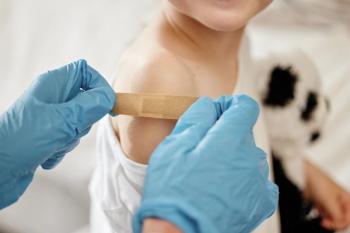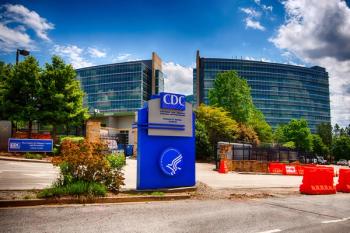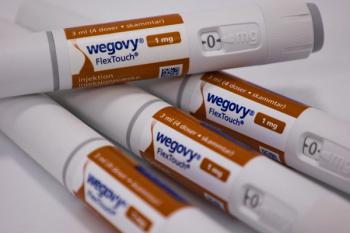
Cardinal Health Discusses Pharmacy Solutions
Debbie Weitzman, president of pharmaceutical distribution at Cardinal Health, speaks to Pharmacy Times® about the services that Cardinal Health offers across the distribution model during the Cardinal Health Retail Business Conference in Nashville, TN.
Debbie Weitzman, president of pharmaceutical distribution at Cardinal Health, speaks to Pharmacy Times® about the services that Cardinal Health offers across the distribution model during the Cardinal Health Retail Business Conference in Nashville, TN.
PT: Can you talk about the current distribution model and what it means for payers, hospitals and patients?
Debbie Weitzman: I would say that there are two paths for the patient. [One way] could be through the hospital through some sort of emergency situation or a planned surgery of some kind […], and then there’s typically a discharge management process. Every step of the way, Cardinal has a touchpoint with the provider, i.e. the hospital, the long-term care facility, and retail setting.
In my position, we actually organize ourselves around what we call, “class-of-trade,” [meaning the] touchpoints where you need a pharmacy to be supporting the patient. We have distribution to [integrated delivery networks (IDNs)] [or] free-standing hospitals. We also have your basic distribution, which is where a pharmacy places an order and we curate their order so they’re buying what they’re supposed to buy. It seems like a nice simple process, but there are many hands behind the scenes that go into making it a good order and getting it out the door of our facility to hospitals or out-patient facilities.
The other path is simple: as people age, they need maintenance medication. Things such as cholesterol or high blood pressure won’t typically require hospitalization, but their doctor wants them to be on the medication for their health. That’s a captive, retail experience for that patient and we are very present as well in that class of trade. Everything through our large chains, customers, regional chains, to our 20,000 retail independent community pharmacies, we service these pharmacies and make them better.
PT: When you talk about these touchpoints, is it more that Cardinal Health oversees operations or do they provide specific programs or products?
Weitzman: Well, what we consider the product are the drugs themselves. We don’t make any drugs, we only source our drugs from those manufacturers who make them, put them in our warehouse, and move them out for our patients. What we develop and what we call solutions are sort of a suite of different services that go beyond just distributing the products. In the acute setting, we have the capability to do complete outsourcing of a hospital’s in-patient pharmacy to us […] We have approximately 150 IDNs that I mentioned previously, where there is an arrangement in place to manage some part of their pharmacy. The idea behind that is better clinical outcomes, where we can support and manage IDNs of different sizes.
For our retail pharmacies, we run the gamut. We have tools that can help them manage their inventory better, and [a] proprietary system called Cardinal Inventory Manager (CIM). We have lots of clinical tools too that are like programs in a box, so if you own a pharmacy and you want to start getting into flu vaccinations, we can help train you [...] and procure the things you need to be paid for the program as well. We also have a medical billing package, where pharmacies can become certified to bill through the pharmacy things outside of the drug benefit.
We’re essentially trying to make the pharmacy more efficient by freeing up time, since pharmacists are very highly trained professionals in the health field and they can do a lot based on their education and their experience. There are studies that show that people go to their doctor 3 to 4 times a year, but they go to their pharmacist sometimes weekly. So that touchpoint is really important for the patient in terms of taking care of themselves.
PT: How does Cardinal Health interact effectively with independent retail pharmacies in order to better engage with and serve communities?
Weitzman: The idea of customizing the experience for the patient. Healthcare is so personal and local. They want someone they can talk to, who they can have a relationship with because there’s trust involved. Our retail independents are incredibly responsive to the needs of their communities. A retail pharmacy in New York City would be wildly different than one in rural Indiana. There are areas of our country that need a healthcare professional of any kind, and there’s others where any healthcare expertise you want is steps away in a big city, and in that case, you want great service.
How does Cardinal Health strengthen the relationships between health care providers, payers, pharmacies, and patients?
Weitzman: One of the biggest challenges is, because of the nature of their independence, [retail pharmacies] don’t move as 1, and payers don’t want to have the manpower or the administrative time of 1-by-1 contracting with each of those, so they join networks of different kinds. So, we developed our platform called LeaderNET® , which is on the billing side of things. We actually negotiate on behalf of all of our LeaderNET
The other is OutcomesMTM®, which is a clinical network where [our] customer is the payer who is interested in reaching out to patients through pharmacies. So, health insurance plans as well as [pharmacy benefit managers] are both willing to pay pharmacists to have those interactions with patients. It’s worth it to make sure that patients’ medications are reconciled with each other so that there aren’t any negative interactions between medications. OutcomesMTM
In addition, Telepharm® is a video conferencing platform that allows pharmacies to operate a pharmacy remotely. This provides the opportunity to expand pharmacy services and serve patients in — rural, isolated areas. We just acquired mscripts®, a mobile app that is used to push out information for different needs and has a way to connect to the patient level. Pharmacies use it to let patients know that their prescriptions are ready. That helps patients who are home-bound and need the reminder.
What is the future of retail pharmacy and is Cardinal Health situated to support it?
Weitzman: Pharmacies and Cardinal, we all need to start segmenting the kind of service that we deliver to different patients. The fact is that 10,000 baby boomers are turning 60 [years of age] every single day so there’s quite a big part of our population that are oriented toward the personal end of their pharmacy experience. When you talk about the future of pharmacy, you have to break it down maybe in 5- to 6-year chunks. So, I don’t think anything will change for another 5 years, but we also have to be thinking of the future in 10 to 20 years out, where people will want a more digital experience.
We’re already starting to have those conversations and a lot of our customers say that digital might not be something they need now, but it is something they could see themselves needing in the future. We currently have a delivery system that works for our pharmacies. Currently 70% of our customers offer home delivery either in an isolated or coordinated way.
Our mobile app that we bought has a lot of promise to go beyond the services that it offers today. Once you’re in a mobile relationship with someone, it opens up a lot of possibilities about what you could do through mobile and through the app.
Newsletter
Stay informed on drug updates, treatment guidelines, and pharmacy practice trends—subscribe to Pharmacy Times for weekly clinical insights.














































































































































































































